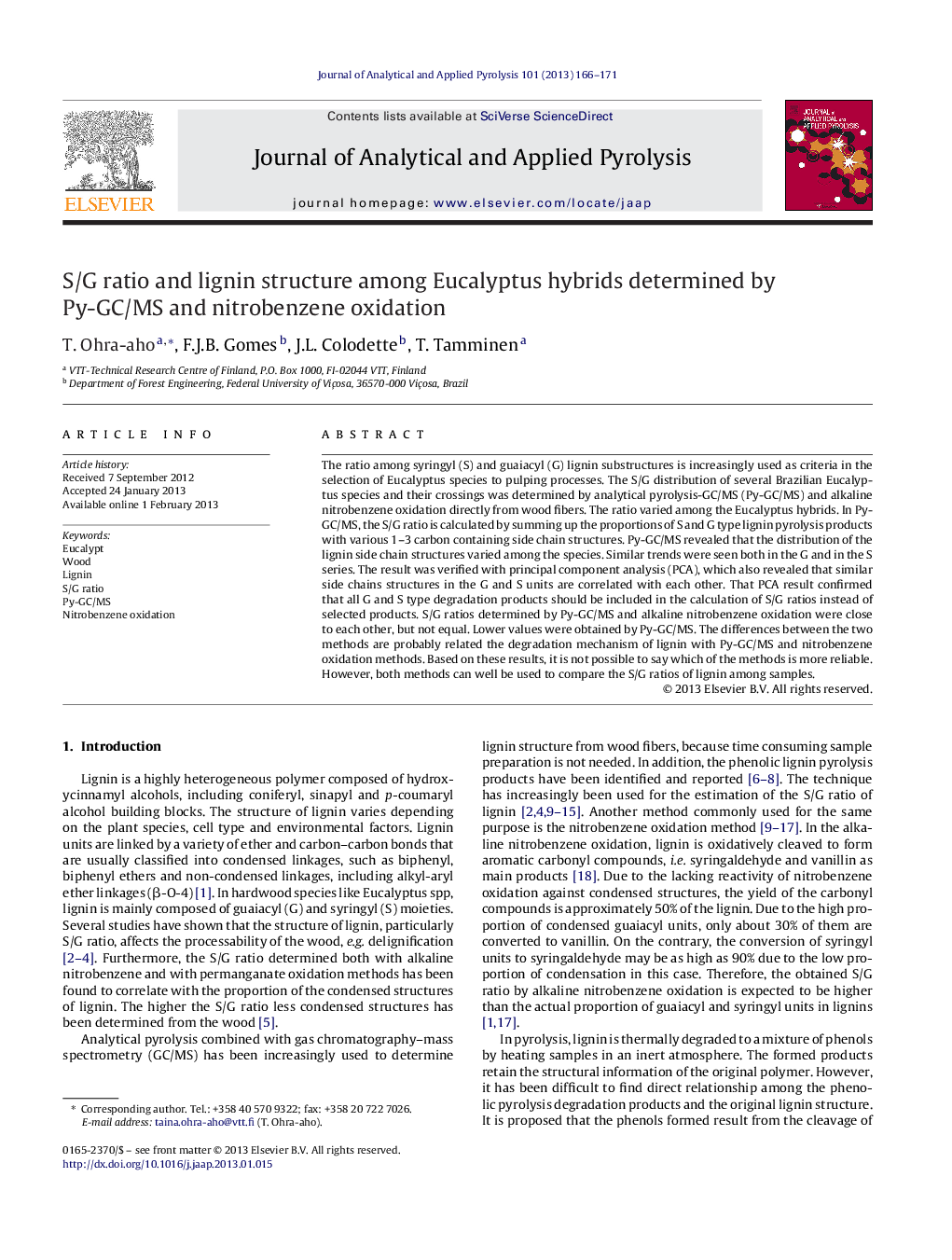| کد مقاله | کد نشریه | سال انتشار | مقاله انگلیسی | نسخه تمام متن |
|---|---|---|---|---|
| 1197472 | 1492976 | 2013 | 6 صفحه PDF | دانلود رایگان |

The ratio among syringyl (S) and guaiacyl (G) lignin substructures is increasingly used as criteria in the selection of Eucalyptus species to pulping processes. The S/G distribution of several Brazilian Eucalyptus species and their crossings was determined by analytical pyrolysis-GC/MS (Py-GC/MS) and alkaline nitrobenzene oxidation directly from wood fibers. The ratio varied among the Eucalyptus hybrids. In Py-GC/MS, the S/G ratio is calculated by summing up the proportions of S and G type lignin pyrolysis products with various 1–3 carbon containing side chain structures. Py-GC/MS revealed that the distribution of the lignin side chain structures varied among the species. Similar trends were seen both in the G and in the S series. The result was verified with principal component analysis (PCA), which also revealed that similar side chains structures in the G and S units are correlated with each other. That PCA result confirmed that all G and S type degradation products should be included in the calculation of S/G ratios instead of selected products. S/G ratios determined by Py-GC/MS and alkaline nitrobenzene oxidation were close to each other, but not equal. Lower values were obtained by Py-GC/MS. The differences between the two methods are probably related the degradation mechanism of lignin with Py-GC/MS and nitrobenzene oxidation methods. Based on these results, it is not possible to say which of the methods is more reliable. However, both methods can well be used to compare the S/G ratios of lignin among samples.
► Structure of lignin among several Eucalyptus hybrids was studied by Py-GC/MS.
► The S/G ratio comparison between Py-GC/MS and nitrobenzene oxidation methods was performed.
► Structures of lignin varied among the Eucalyptus hybrids studied, based on analysis by Py-GC/MS.
► Lower S/G ratios were obtained by Py-GC/MS in comparison to the nitrobenzene oxidation due to the different degradation mechanisms. No general correlation was found between the results obtained by the two methods.
Journal: Journal of Analytical and Applied Pyrolysis - Volume 101, May 2013, Pages 166–171